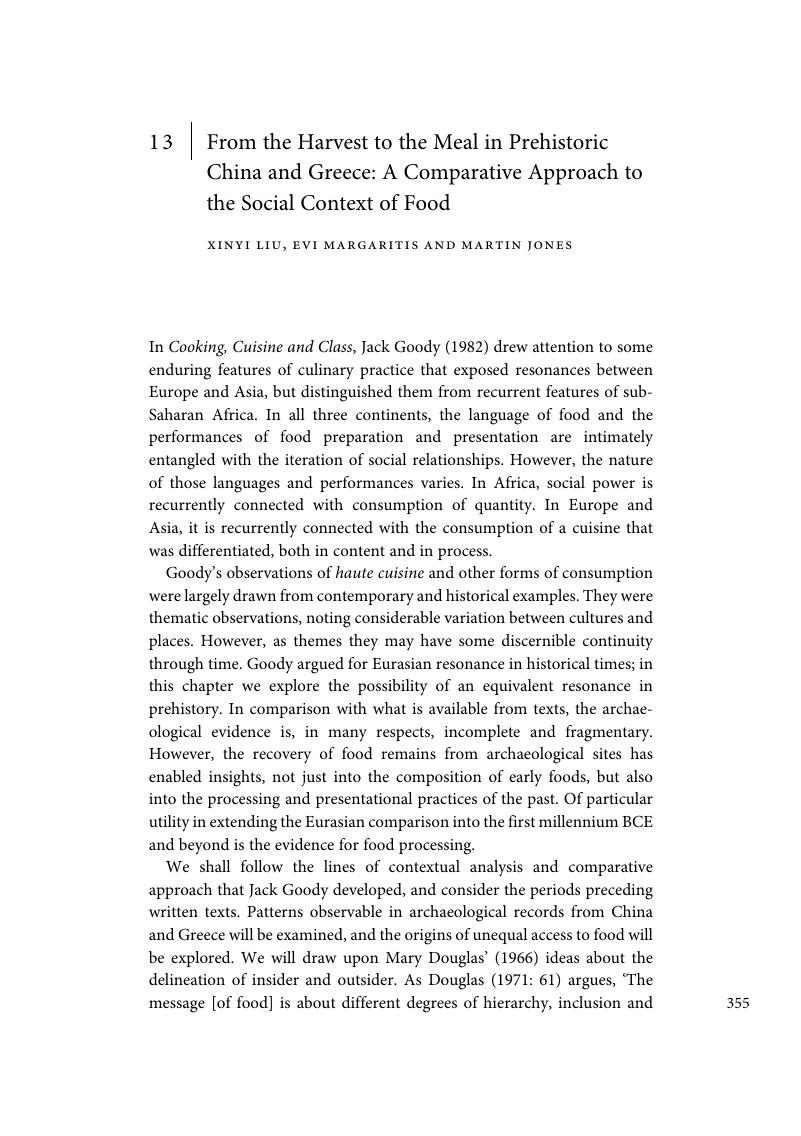Book contents
- Ancient Greece and China Compared
- Ancient Greece and China Compared
- Copyright page
- Contents
- Figures
- Acknowledgements
- Notes on Editions
- Contributors
- Introduction: Methods, Problems and Prospects
- Part I Methodological Issues and Goals
- Part II Philosophy and Religion
- Part III Art and Literature
- Part IV Mathematics and Life Sciences
- Part V Agriculture, Planning and Institutions
- 13 From the Harvest to the Meal in Prehistoric China and Greece: A Comparative Approach to the Social Context of Food
- 14 On Libraries and Manuscript Culture in Western Han Chang’an and Alexandria
- Afterword
- Index
- References
13 - From the Harvest to the Meal in Prehistoric China and Greece: A Comparative Approach to the Social Context of Food
from Part V - Agriculture, Planning and Institutions
Published online by Cambridge University Press: 21 December 2017
- Ancient Greece and China Compared
- Ancient Greece and China Compared
- Copyright page
- Contents
- Figures
- Acknowledgements
- Notes on Editions
- Contributors
- Introduction: Methods, Problems and Prospects
- Part I Methodological Issues and Goals
- Part II Philosophy and Religion
- Part III Art and Literature
- Part IV Mathematics and Life Sciences
- Part V Agriculture, Planning and Institutions
- 13 From the Harvest to the Meal in Prehistoric China and Greece: A Comparative Approach to the Social Context of Food
- 14 On Libraries and Manuscript Culture in Western Han Chang’an and Alexandria
- Afterword
- Index
- References
Summary

- Type
- Chapter
- Information
- Ancient Greece and China Compared , pp. 355 - 372Publisher: Cambridge University PressPrint publication year: 2018
References
- 1
- Cited by



